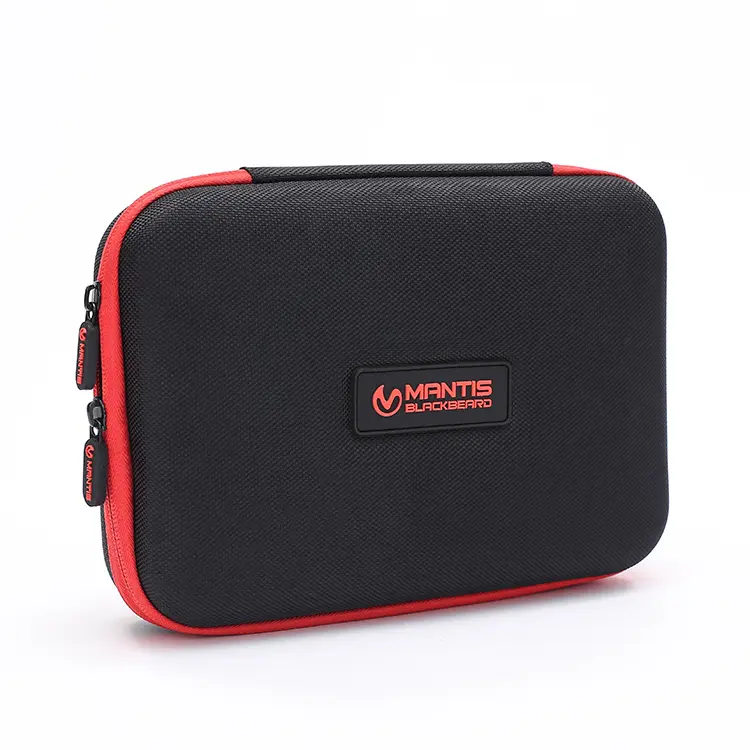Raw Material Preparation and Pretreatment of EVA Tool Bags
In the global market, EVA tool bags are favored by many wholesale buyers for their lightweight, durable, and waterproof properties. Whether used in outdoor tool bags, electronic device cases, or medical tool kits, EVA material delivers excellent performance. This article provides a comprehensive guide to raw material preparation and pretreatment for EVA tool bags for global wholesale buyers, helping you better understand raw material selection, pretreatment methods, and key quality control points to ensure the production of high-quality EVA tool bags.
I. Overview of EVA Tool Bag Raw Materials
EVA (ethylene-vinyl acetate copolymer) is a thermoplastic elastomer with excellent flexibility, impact resistance, and water resistance. The primary raw material for EVA tool bags is EVA sheet, along with auxiliary materials such as zippers, webbing, and hardware fasteners. The performance of EVA material is primarily determined by its vinyl acetate (VA) content and melt index (MFI). A higher VA content results in a softer material, while the MFI affects the material’s processing properties.
II. Raw Material Selection and Inspection
(I) EVA Sheet Selection
When selecting EVA sheet, consider the following factors based on the specific purpose and design requirements of the tool kit:
VA Content: The VA content affects the softness and hardness of the EVA sheet. Generally, EVA sheets with a VA content between 18% and 28% are suitable for most tool kits.
Thickness: Select an appropriate thickness based on the size and load-bearing requirements of the tool kit. Typical thicknesses range from 1mm to 5mm.
Color and Pattern: EVA sheet is available in a variety of colors and patterns and can be customized to meet customer needs.
(II) Accessory Material Selection
Zipper: Select high-quality zippers, ensuring durability and water resistance.
Webbing: For shoulder straps or handles, webbing should provide good strength and comfort.
Hardware fasteners: Hardware such as D-rings and buckles should be corrosion-resistant and high-strength.
(III) Raw Material Inspection
Appearance Inspection: Inspect the EVA sheet for defects such as scratches, bubbles, and impurities. Physical property testing: including density, hardness, and tensile strength tests, to ensure the material meets design requirements.
Environmental standards: Ensure that the raw materials meet international environmental standards, such as ROHS.
III. EVA Sheet Pretreatment
(I) Drying
EVA sheets may absorb moisture during the production process and therefore require drying before use. Typically, the EVA sheets are preheated in an oven at 60-80°C for 2-4 hours to remove moisture and volatiles. This step prevents bubbles or surface defects during subsequent processing.
(II) Pre-pressing and Leveling
To ensure uniform stress distribution during the molding process, the EVA sheet requires pre-pressing and leveling. This can be done using a hot press, heating the sheet to its softening temperature and then applying appropriate pressure to smooth the surface. This step improves the product’s appearance and molding accuracy.
(III) Surface Treatment
Surface treatment of EVA sheets is intended to enhance their bonding properties with other materials. Common surface treatment methods include:
Flame treatment: Treating the surface of the EVA sheet through flame combustion increases its surface energy, thereby improving bonding properties.
Chemical treatment: Coating the sheet surface with an EVA treatment agent enhances adhesion and wear resistance.
Physical treatment: Sandblasting or polishing increase surface roughness, improving bonding.
(IV) Lamination and Bonding
If the tool kit requires a multi-layer structure, such as fabric + EVA + lining, glue or hot melt technology is used to bond the layers together. Temperature and pressure must be controlled during the bonding process to avoid air bubbles and delamination. The laminated material is dried to remove moisture and then cut into small pieces according to the design drawings.
IV. Cutting and Forming
(I) Cutting
The pre-treated EVA sheet is typically cut into the individual tool kit components using a vertical cutter or die cutter. Cutting requires ensuring smooth edges and precise dimensions.
(II) Forming
Forming is the process of forming the cut EVA sheet through hot or cold pressing. Place the cut EVA sheet in an oven set at 120-180°C to soften it. Then, apply pressure to fit it into the mold, cool it down, and release it from the mold. For complex products, multiple custom molds may be required.
V. Quality Control
(I) Physical Property Testing
Randomly inspect the finished product’s density (0.9-0.95 g/cm³), hardness (Shore A 30-70), and impact resistance to ensure it meets load-bearing and vibration requirements.
(II) Appearance and Dimensional Inspection
Visually and with measuring tools, verify edge flatness, printing clarity, and consistency with the design drawing. Defective products must be returned for repair or scrapped.
VI. Market Applications of EVA Tool Kits
Due to their lightweight, shockproof, and corrosion-resistant properties, EVA tool kits are widely used in electronics packaging, tool kits, travel cases, and other fields. Raw material selection and pretreatment should be tailored to the specific application scenario and customer needs.
VII. Summary
Raw material preparation and pretreatment for EVA tool kits are critical steps in producing high-quality products. By selecting appropriate EVA sheets and auxiliary materials, and carrying out strict drying, pre-pressing, surface treatment and quality control, the performance and appearance of the tool kit can be ensured to be optimal.
Post time: Aug-01-2025





